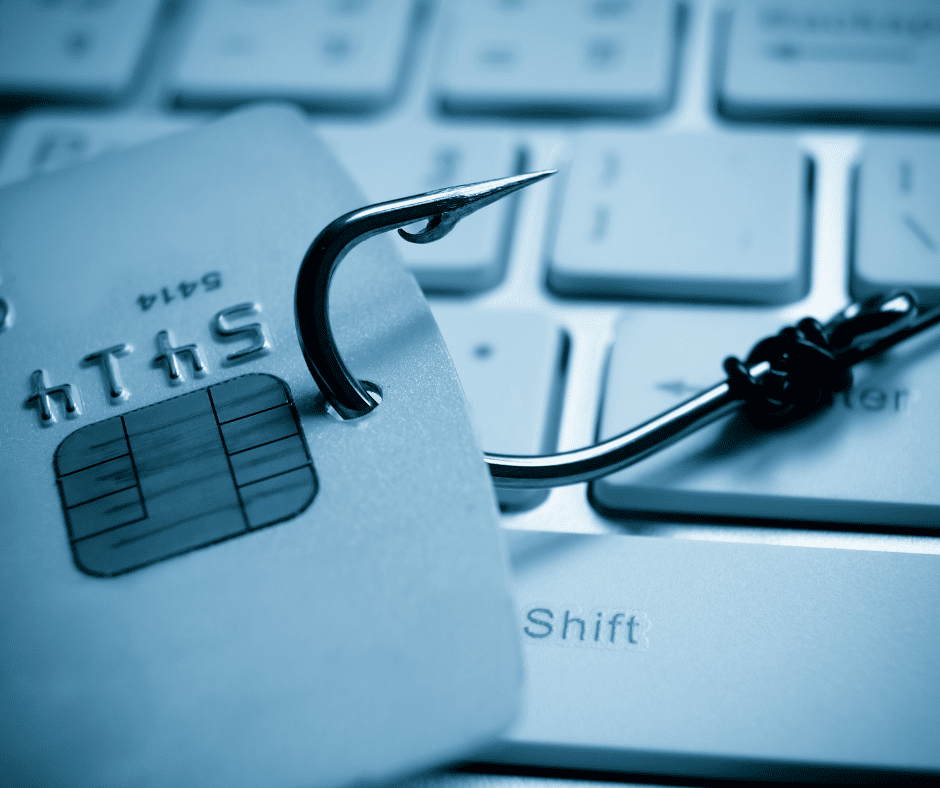

Phishing: Everything You Need To Know
Phishing is a form of online fraud where the scammer uses emails, websites, or texts to impersonate legitimate businesses or people. They are designed to trick you into giving away your personal information. That’s why it’s important to know what it looks like—and how to avoid becoming a victim of this type of scam. In this guide, we’ll cover everything from what phishing is to tips for spotting and avoiding these attacks, so you don’t get scammed!
What Is Phishing?
Phishing is a form of cybercrime in which scammers try to trick you into giving up your personal information. The act is usually carried out by email and often targets small-to-medium-sized businesses, but individuals can be targeted too. The most common forms of phishing involve fake emails or websites that try to get you to enter your login details or other sensitive information.
In a phishing attack, a criminal will send you an email or text message that looks like it’s from someone you know or trust, asking for sensitive information such as your Social Security number and bank account details. Employees are often asked for private credentials that give access to private data. If you reply with this information, the scammer can use it to gain access to your accounts—and potentially steal them altogether.
Unfortunately, these scams are notoriously difficult to spot — even for experienced internet users — which means these attacks can be incredibly successful.
Here are some statistics to think about:
- The most prevalent reason for data breaches in IBM’s 2022 Cost of Data Breach Report is the use of stolen or compromised credentials as a result of phishing
- In 2021, 83% of businesses said they had been victims of phishing.
- A total of 255 million phishing attacks were recorded in the first half of 2022, a significant increase over the same period the year before.
Types Of Phishing
As technology advances, so do the methods of phishing that scammers and hackers use to gain access to sensitive data. It’s important to stay up-to-date on the many types of phishing to best avoid falling victim to an attack. Here are just a few basic types:
Email Phishing
This is the most popular type of attack in which an attacker sends emails to trick recipients into disclosing personal information. Phishing attacks are used to gain access to sensitive, private information such as usernames, passwords, and credit card details. The most common attacks involve directing you to a bogus website that looks like a legitimate site. These emails may also contain malicious attachments that download malware onto your device.
Spear Phishing
Spear phishing emails are targeted at specific individuals or businesses with the purpose of gaining access to sensitive information. These emails usually appear legitimate and may contain attachments that contain malware or links to malicious websites. It’s important not to open unsolicited emails, especially if they appear suspicious or ask for personal information such as passwords or credit card numbers.
Whaling
Whaling phishing is a type of phishing attack that targets high-ranking executives within companies or organizations. Whaling attackers send emails to high-level executives with the goal of tricking them into giving up sensitive information such as financial records and personally identifiable information.
Vishing
Vishing is a form of phishing that uses voice technologies to trick victims into revealing their personal information. It is also known as voice phishing or phone phishing. Vishing scams are often more effective than traditional phishing schemes because they can use caller ID spoofing to make calls appear as if they’re coming from a trusted source like your bank or credit card company.
Smishing
Smishing (SMS phishing) is a form of phishing sent via text messaging. It’s just as dangerous as traditional phishing but harder to detect because it’s disguised as a regular text message on your mobile device.
Pop-up Phishing
Pop-up phishing is a newer version of this scam that uses fake notifications and pop-up messages on your screen to trick you into giving out personal details. These pop-up notifications usually appear when a user visits a website that has been compromised by cybercriminals and infected with malicious malware.
Domain Spoofing
Spoofing a domain name or email address is a common tactic used by cybercriminals to trick online consumers. Domain spoofing is used to make a fake but seemingly authentic website or email in order to deceive users into giving up their personal information through phishing.
Examples Of Phishing
Here are some examples of attempts:
- An email that appears to come from your tax service claiming there’s a problem with your tax return and asking you to click through on a link and enter your login details.
- An email from what appears to be your coworker asking you to review a document linked as an attachment.
- A call from your bank informing you that there is a problem with your account and asking for your pin number to verify your identity.
- A text message that appears to come from your boss asking for information such as server login credentials.
Tips For Avoiding Phishing Attacks
Sometimes, they’re hard to spot and responsible for several cases of identity theft and data breaches. The more you educate yourself on how to protect your sensitive data, the more likely you’ll be able to spot these attempts!
Here are some tips for avoiding an attack:
- Check the sender’s email address. If you get an email that has a sense of urgency and is asking for private information, check the email. Is all the spelling correct? Is the domain correct?
- Verify with the sender. If you receive a call, email, or text message asking for personal information, call the company or sender through a trusted means of communication to confirm that it’s a legitimate request.
- Check the URL of the website. If you receive an email or text message from someone telling you to click a link, don’t click on it until you check that the URL is really that of the organization (e.g., “you should go to www.banknamehere.com”) and not some other site designed to look similar (e.g., “you should go to wwwbanknameherecom”).
- Check the spelling. If something looks wrong or doesn’t match up with what the sender would normally write, then there may be something fishy going on!
- Don’t open attachments from unknown sources. If someone is requesting you download an attachment, verify with the sender that it is legitimate.
Conclusion
So now you know what phishing is, how it works and what you are looking out for. Phishing scams are out there, but with the right knowledge and awareness, you can protect yourself and your information online. Use this guide to educate yourself about all types of scams, how they work, and how to stay safe!
Partner with a small business IT support company if you want to further protect your company from a phishing attack with continuous monitoring and risk assessment.


